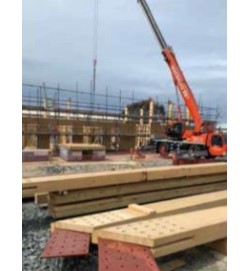The move of construction works with tradespeople performing site based works, either sub-contract or direct for main contractors, to a factory-based production line is not going to be as easy as many might think. Stephen Boyd, Managing Director of Building With Frames (BWF) explains more.
Offsite certainly has a lot of drive at the moment and some may believe there are big financial rewards for those that win the big contracts, which means there will be a lot of new companies being formed and sales departments seeking the big deals. If you think of it in simple terms all that is needed is a formula for costing boxes or wall panels, then scale it up for larger projects and it should all fall into place with a nice mass production economy of scale and profit margin to suit.
However, some may be too hasty to agree deals where they have underestimated the scale of works involved in the project delivery. Billions are being invested in developing new factories, researching systems around the world, building corporate management teams, importing machinery and negotiating contracts. And why not, if it is as simple as factory car production where they just roll off the line and get delivered to site in the chosen colour or cladding.
Where I believe it will not be as simple is in the variables – of which there are so many to check and it takes very experienced teams to identify them. The experience takes years to build and is often dependant on location, where some may deal with projects down narrow lanes whilst others deal with motorway routes, some may have to deal with sloping sites whilst others have flat sites and so on. It is essential to identify at the point of sale where there is soft ground, overhead cables, access routes, and turning points, understanding low loaders, cranes, using curtain side trucks or flatbeds, loading and unloading methods and weights. This is to name a few of the variables just in the transport and then there are the extensive variations of product specification, client requirements, delivery schedules, how these affect production rates and then the material purchasing, storing and labour, design and engineering resources.
This skill and experience cannot be simply brought in like a factory production line from overseas, but it can be found in many of the smaller local companies involved with offsite in every county, whether the company supplies steel frame, timber frame, panelised products, volumetric or modular units. One of the best ways to source these companies is often through a local framework or procurement group, where the company checks have already been made, otherwise a check on previous work and clients will be essential.
Now is a good time for Councils, LEPS, housing associations, investors, developers and clients to collaborate with their local SME’s that are keen to grow, but either need the consistent pipeline, support or investment. That will enable them to create better job’s, develop training schemes, take on apprentices and source better machinery with a development plan for the future and the higher skilled employment of the future.









